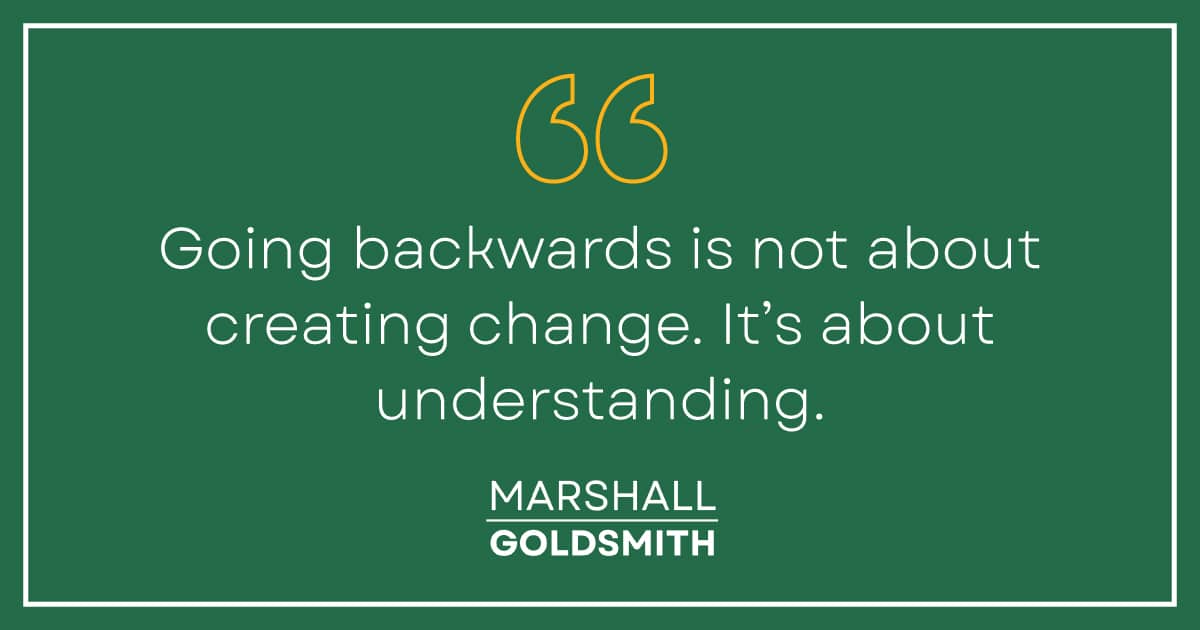Playing Favorites By Marshall Goldsmith There’s a reason I devote...
Recently, I interviewed highly respected Conversational Intelligence®, We-centric Leadership, Neuro-Innovation expert and Marshall Goldsmith 100 Coach winner, Judith Glaser. We talked about many different leadership topics relating to conversational intelligence, including Judith’s leadership tool called the Double-Click. Below is a short excerpt from our interview about this wonderful tool that will help any leader or team become more successful!
MG: Judith, one phrase I’d never heard from anyone else with regards to communication and leadership is “double-clicking”. What is this and how can leaders and teams benefit by understanding and using this tool themselves?
JG: Double-clicking is one of our five top conversational essentials. I came up with this concept when I noticed what happened when people working on their computers double-clicked on a folder. When they double-clicked, all of these things were inside it that they hadn’t seen before or didn’t remember they’d saved. I wondered, “What if I teach leaders to follow up with questions (double-click) to confirm understanding?” This is crucial because often we assume everyone has the same understanding. Unless we double-click and confirm that we understand each other, we are just assuming that we understand and things can quickly go awry.
MG: Interesting! One of the great leaders I worked with had a great phrase. He said, “One of the biggest problems with communication is the assumption that it happens.” If I don’t do the double-click you describe, you may walk out the door with one definition of what I said, and I may walk out with a completely different intention.
JG: Exactly. For example, I was working with Bob Lutz from Chrysler and GM and a room of 250 people broken into smaller groups. I asked everyone to tell us what success means. I then asked them to guess how many things that people would have in common. We had one table that had one descriptive word defining success in common. That was it!
That was the turning point for them. They realized they hadn’t been asking each other questions to help them understand each other. No one was double-clicking; nearly everyone was assuming.
MG: Fantastic example! I love this concept of double-clicks. Thank you!

In August, I am hosting a free webinar series for the Marshall Goldsmith 100 Coaches applicants! You will learn more about the 20 bad habits, like “asking” rather than “telling”, and other topics from my books, What Got You Here Won’t Get You There and Triggers. All are welcome to join!
RSVP for What Got You Here August 8 at 9am EDT and Triggers August 9 at 9am EDT. Everyone is welcome to join!
Triggers is a #1 New York Times and Wall Street Journal best-seller! Order it at Amazon. See The Marshall Goldsmith Thinkers50 Video Blog for more of this video series.

Adding Too Much Value Won’t Get You There By Marshall...
C-Suite Master Class: No, But, However By Marshall Goldsmith Continuing...
The Doerr Institute: Expanding the Market for Coaches By Marshall...
Making Leadership Development Part of the College Degree at Rice...
Sanyin Siang – Winner of the Thinkers50 Marshall Goldsmith Coaching...
Thinkers50 Marshall Goldsmith Distinguished Achievement Award in Coaching – Nominees...
Leading with Influence: What Is Influence360°? By Marshall Goldsmith Founder...
Are You a Dominator, Manipulator, Persuader or Influencer? By Marshall...
Leading with Influence: Redefining Modern Influence Part 2 By Marshall...
My mission is simple. I want to help successful people achieve positive, lasting change and behavior; for themselves, their people, and their teams. I want to help you make your life a little better. With four decades of experience helping top CEOs and executives overcome limiting beliefs and behaviors to achieve greater success, I don’t do this for fame and accolades. I do this because I love helping people!
As an executive educator and coach, I help people understand how our beliefs and the environments we operate in can trigger negative behaviors. Through simple and practical advice, I help people achieve and sustain positive behavioral change.